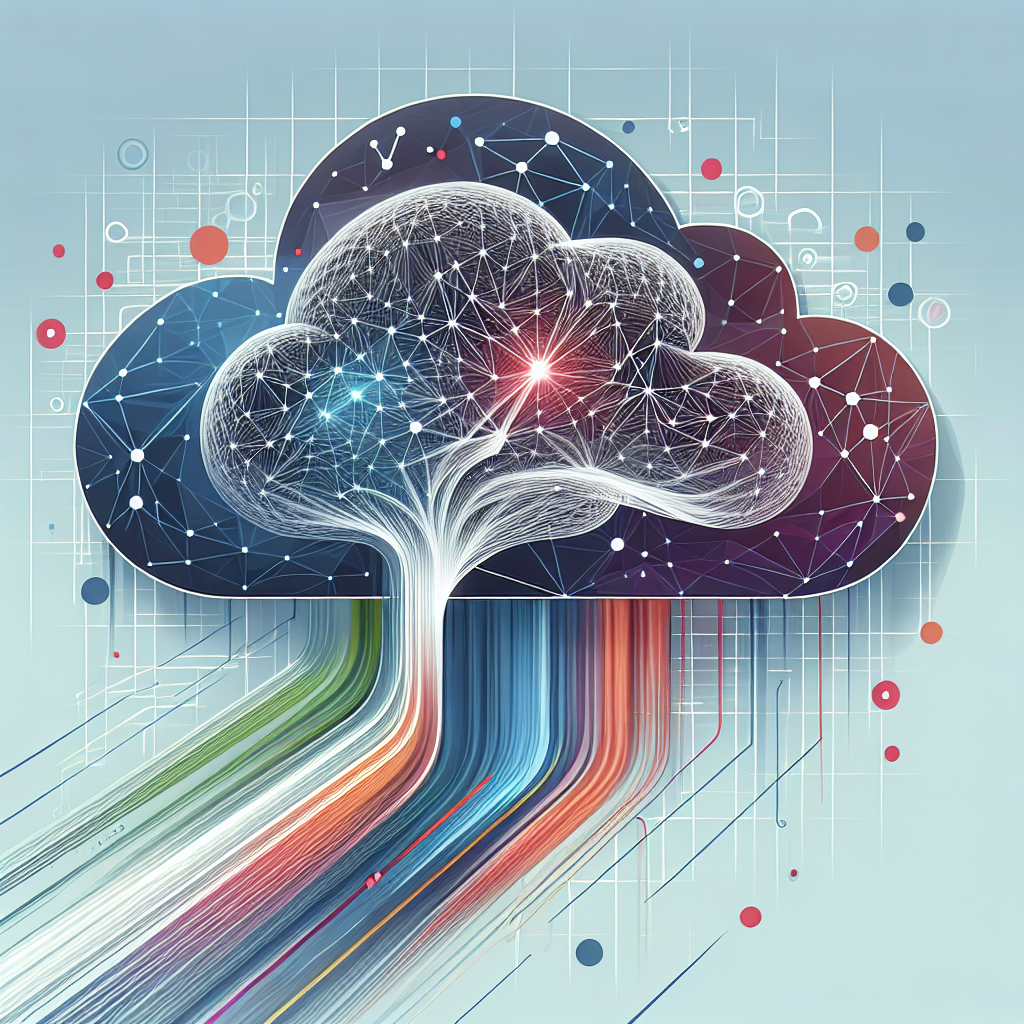So you want to learn about GCP Vertex AI Training? Well, you’ve come to the right place! In this article, we’ll be giving you a comprehensive overview of what GCP Vertex AI Training is all about and how it can help you develop and train your machine learning models. From understanding the basics of aml training to exploring the capabilities of Vertex AI, we’ve got you covered. By the end of this article, you’ll have a solid understanding of GCP Vertex AI Training and be ready to take your machine learning projects to the next level. So let’s jump right in!

Overview of GCP Vertex AI Training
What is GCP Vertex AI Training?
GCP Vertex AI Training is a service offered by Google Cloud Platform (GCP) that allows users to train machine learning (ML) models at scale in a highly efficient and streamlined manner. It provides a managed infrastructure for training models, leveraging the power of TensorFlow and AutoML to simplify the training process. With GCP Vertex AI Training, users can easily build, train, and deploy ML models without having to worry about managing the underlying infrastructure.
Why is GCP Vertex AI Training important?
GCP Vertex AI Training is important because it simplifies the process of training ML models, making it more accessible and efficient for both beginners and experienced ML practitioners. It eliminates the need for users to set up and manage their own training infrastructure, which can be time-consuming and resource-intensive. By leveraging the capabilities of GCP, Vertex AI Training enables users to focus more on the development and optimization of their ML models, rather than dealing with infrastructure complexities.
Benefits of GCP Vertex AI Training
There are several benefits to using GCP Vertex AI Training for ML model training:
-
Efficient and Scalable Infrastructure: GCP Vertex AI Training provides managed training infrastructure that can efficiently handle large-scale training jobs. It enables users to easily scale their training process up or down based on their specific requirements, ensuring optimal resource utilization.
-
AutoML Capabilities: The integration of AutoML in GCP Vertex AI Training allows users to leverage automated ML workflows to accelerate and simplify the training process. AutoML helps in automating key steps such as data preprocessing, feature engineering, and hyperparameter tuning, making it easier to build high-quality ML models.
-
Custom Training with TensorFlow: GCP Vertex AI Training supports custom training with TensorFlow, a popular ML framework. Users can take advantage of TensorFlow’s flexibility and extensive library of pre-built model architectures to create and train their own custom ML models.
-
Support for Different Data Types: GCP Vertex AI Training supports various data types, including structured, unstructured, and time-series data. It provides tools and APIs for preprocessing and handling different types of data, making it easier to train models on diverse datasets.
-
Integration with Other GCP Services: GCP Vertex AI Training seamlessly integrates with other GCP services, such as Google Cloud Storage, Dataflow, and BigQuery. This allows users to leverage additional capabilities for data storage, preprocessing, analysis, and visualization, enhancing the overall training experience.

Key Features and Components
Managed Training Infrastructure
GCP Vertex AI Training provides a managed infrastructure for training ML models. This means that users don’t have to worry about setting up and managing their own training clusters, virtual machines, or distributed computing resources. The managed infrastructure takes care of the underlying hardware and software components required for efficient training, allowing users to focus on developing their ML models.
AutoML
AutoML is a key component of GCP Vertex AI Training that provides automated ML capabilities. With AutoML, users can accelerate the model training process by automating tasks such as data preprocessing, feature engineering, hyperparameter tuning, and model selection. It simplifies the training workflow, making it easier for users to build high-quality ML models without extensive manual intervention.
Custom Training with TensorFlow
GCP Vertex AI Training supports custom training with TensorFlow, a popular open-source ML framework. Users can leverage TensorFlow’s extensive library of pre-built model architectures and APIs to build and train their own custom ML models. This allows for greater flexibility and customization, enabling users to address specific business needs or research requirements effectively.
Support for Different Data Types
GCP Vertex AI Training supports various data types, including structured, unstructured, and time-series data. It provides tools and APIs for preprocessing data to prepare it for training. The platform supports common data preprocessing tasks such as normalization, feature scaling, and handling missing values. It also offers specialized features for handling time-series data, such as windowing and lagging.
Integration with Other GCP Services
GCP Vertex AI Training seamlessly integrates with other GCP services, allowing users to leverage additional capabilities for enhanced training. For example, integration with Google Cloud Storage enables users to store and manage their training datasets efficiently. Integration with Google Dataflow allows for scalable and parallel data preprocessing, while integration with BigQuery facilitates data analysis and visualization.

Getting Started with GCP Vertex AI Training
Creating a Project
To get started with GCP Vertex AI Training, users need to create a project in the Google Cloud Console. A project acts as an organizational unit and allows users to manage resources, permissions, and billing. Once a project is created, users can enable the Vertex AI API and set up necessary configurations.
Enabling the Vertex AI API
After creating a project, users need to enable the Vertex AI API in the Google Cloud Console. Enabling the API provides access to the Vertex AI Training service and allows users to create and manage training jobs. The API can be enabled through the “APIs & Services” section of the Google Cloud Console.
Setting up a Google Cloud Storage Bucket
GCP Vertex AI Training requires users to have a Google Cloud Storage bucket to store their training data and model artifacts. Users can create a bucket in the Google Cloud Console, specifying the desired storage location and access control settings. The bucket can then be used to upload and manage training datasets and output models.
Creating and Deploying a Training Job
Once the necessary setup is complete, users can create a training job in GCP Vertex AI Training. A training job consists of specifying the ML model to be trained, the training data, and the desired hyperparameters. Users can select the appropriate ML framework (such as TensorFlow) and configuration options based on their specific requirements. After creating the training job, it can be deployed to start the training process.

Managed Training Infrastructure
Overview of Managed Training Infrastructure
GCP Vertex AI Training provides managed training infrastructure, which abstracts away the complexities of setting up and managing infrastructure for ML model training. The managed infrastructure consists of powerful virtual machines, distributed computing resources, and other tools required for efficient training. The infrastructure is automatically provisioned and scaled based on the training workload, ensuring optimal resource utilization and performance.
Advantages of Managed Training Infrastructure
Using managed training infrastructure offers several advantages:
-
Simplicity and Ease of Use: Managed training infrastructure eliminates the need for users to manually set up and manage their own training clusters or virtual machines. Users can focus on developing and training their ML models, rather than dealing with infrastructure complexities.
-
Resource Optimization: The managed infrastructure automatically scales up or down based on the training workload. This ensures that resources are efficiently utilized, reducing costs and improving overall performance.
-
Reliability and Availability: GCP Vertex AI Training’s managed infrastructure is designed to be reliable and highly available. It leverages Google’s robust infrastructure and fault-tolerant systems, ensuring that training jobs are completed successfully even in the face of failures or disruptions.
Working with Managed Training Infrastructure
When using GCP Vertex AI Training, users interact with the managed training infrastructure through the platform’s APIs and user interface. Users can define their training jobs, specifying the ML model, training data, hyperparameters, and other configuration options. The managed infrastructure then takes care of provisioning the necessary resources and executing the training job. Users can monitor the progress and performance of their training job through the provided metrics and logs.
